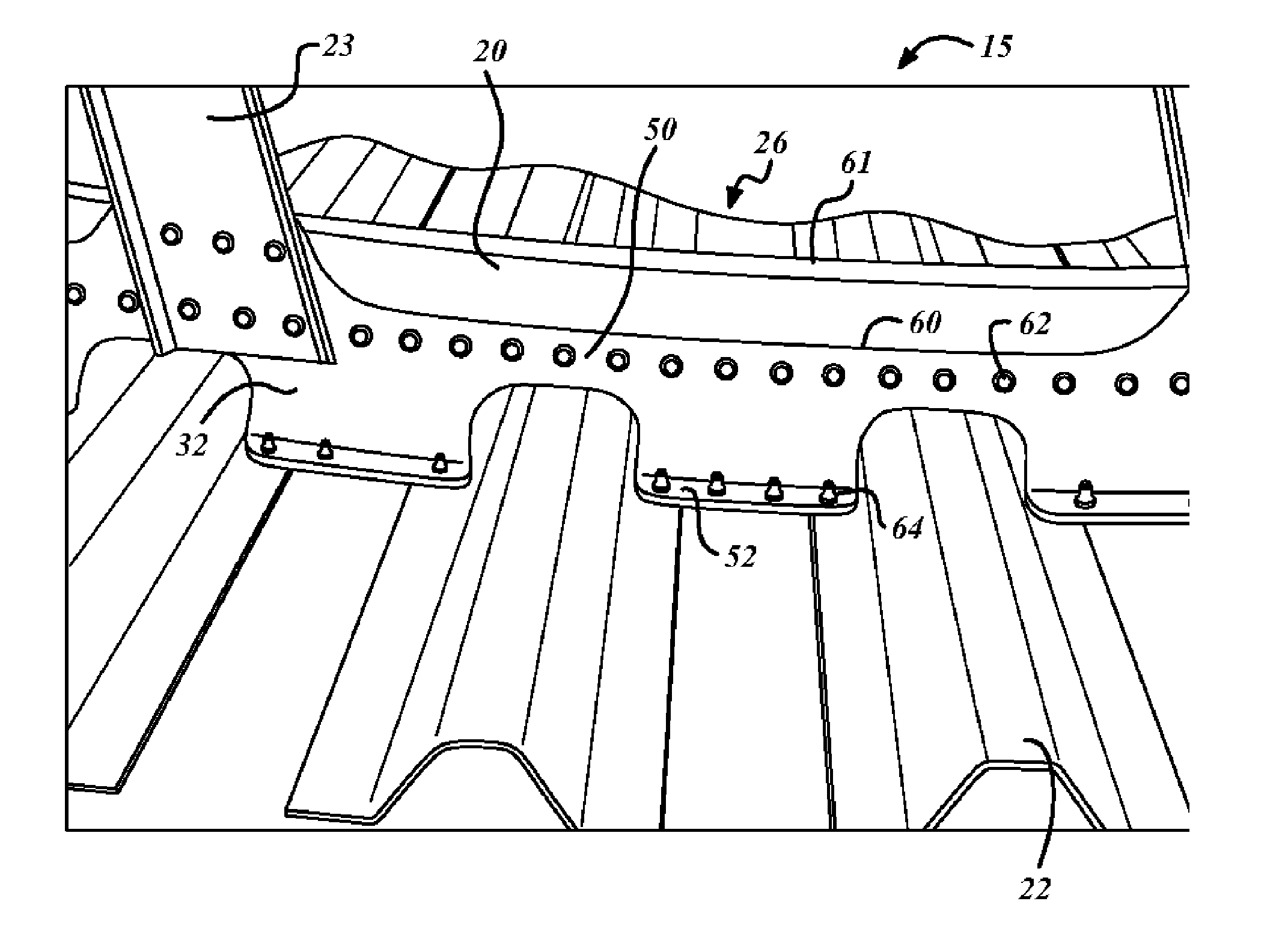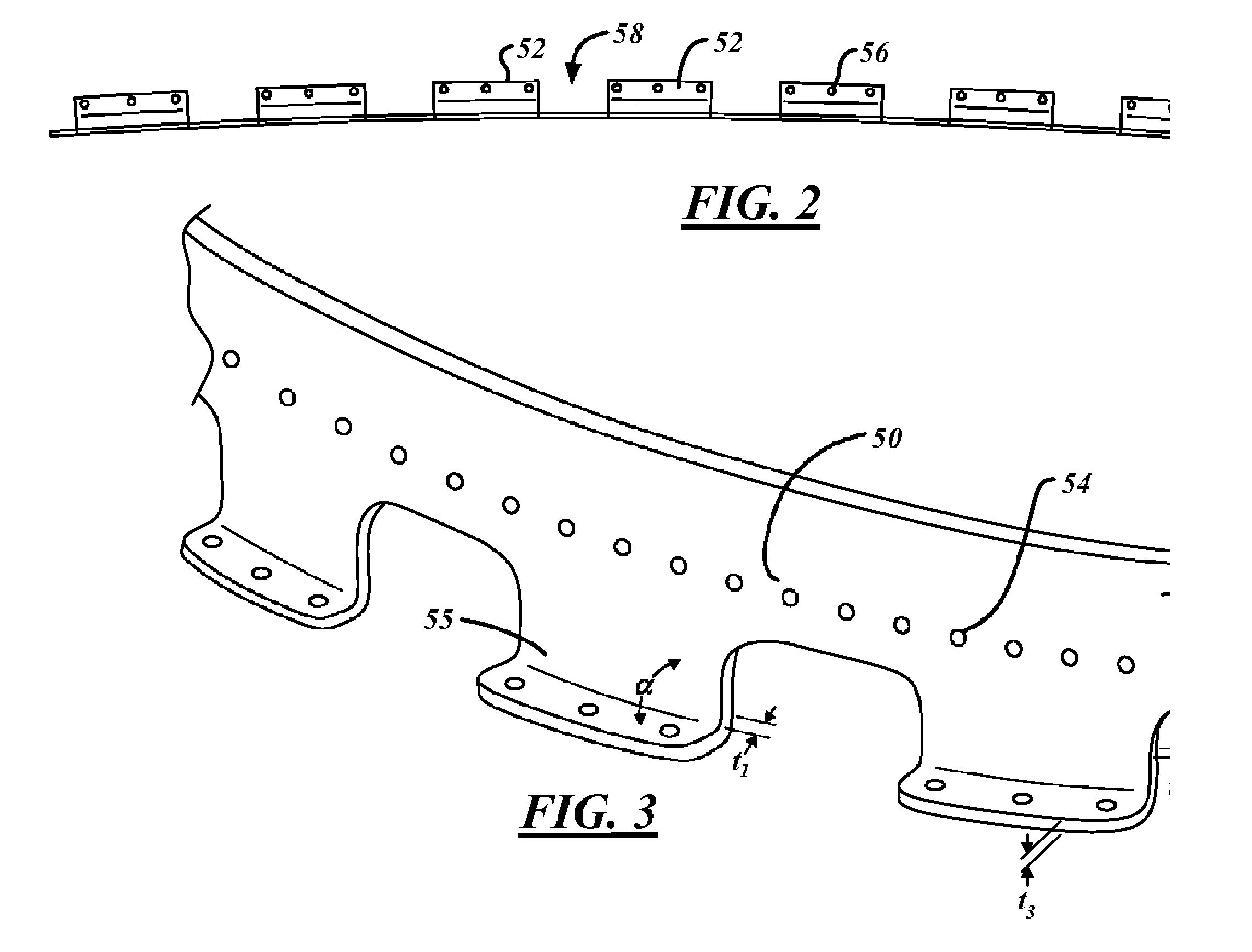Method to control thickness in composite parts cured on closed angle tool
a closed angle tool and composite material technology, applied in the field of composite material preparation, can solve the problems of excessive thickness in the radius beyond, inner radius, tie, and hindered, and achieve the effect of greater uniformity
- Summary
- Abstract
- Description
- Claims
- Application Information
AI Technical Summary
Benefits of technology
Problems solved by technology
Method used
Image
Examples
Embodiment Construction
[0014] The present invention provides a method of forming a composite prepreg material into a closed angle shape and processing the material in a manner that results in a cured component that is consistent throughout its thickness. The present invention finds applicable uses in a wide variety of potential applications, including for example, in the aerospace and automotive industry. The preferred method of the present invention is ideally suited for forming a composite shear tie 32 that is utilized in the supporting framework of a commercial aircraft. A method for forming a shear tie, as one illustrative non-limiting example of a potential end use, will be described further herein below in FIGS. 1-3 and 5-11.
[0015] Referring to FIGS. 1 and 2, a perspective and partial view of an aircraft fuselage 15, the construction thereof may be observed to consist of a support frame structure 26 that includes a series of spaced circumferential frame members 20 that define the overall cross sect...
PUM
| Property | Measurement | Unit |
|---|---|---|
| angle | aaaaa | aaaaa |
| angle | aaaaa | aaaaa |
| angle | aaaaa | aaaaa |
Abstract
Description
Claims
Application Information
 Login to View More
Login to View More - R&D
- Intellectual Property
- Life Sciences
- Materials
- Tech Scout
- Unparalleled Data Quality
- Higher Quality Content
- 60% Fewer Hallucinations
Browse by: Latest US Patents, China's latest patents, Technical Efficacy Thesaurus, Application Domain, Technology Topic, Popular Technical Reports.
© 2025 PatSnap. All rights reserved.Legal|Privacy policy|Modern Slavery Act Transparency Statement|Sitemap|About US| Contact US: help@patsnap.com



